How to Create a Customer Feedback Loop for Business Growth
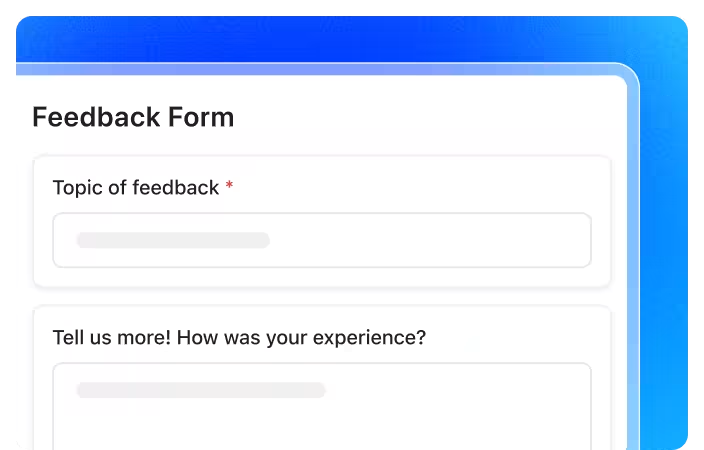
Sorry, there were no results found for “”
Sorry, there were no results found for “”
Sorry, there were no results found for “”

Some companies seem to know what their customers want before anyone even asks. What’s their secret? They actually listen, closely and consistently.
Take Netflix, for instance. They don’t rely solely on star ratings—they track what you watch, how long you watch it, and even how you scroll. That data feeds into a smarter recommendation engine, one that helped Netflix maintain a 79% retention rate through personalized suggestions.
And this isn’t just a tech story. A study from Virtusa found that businesses that actively use customer feedback data grow revenue significantly faster than those that don’t.
The takeaway? Listening to your customers pays off.
Building an effective customer feedback loop shifts your customer service team from scrambling to fix issues to confidently improving what matters. It’s the difference between reacting to complaints and designing better outcomes across the end-to-end customer experience.
In this guide, you’ll learn how to build a system that leverages feedback into growth.
A customer feedback loop is a structured process where you:
Unlike a random one-off survey, a feedback loop creates ongoing conversations with your customers.
What makes it powerful is the cycle—feedback isn’t just collected and forgotten. It moves through a clear journey: from collection to action to communication, then back again.
Slack used this model to rise to the top, letting early customer feedback drive the product’s evolution as the user base grew.
These examples work because they’re built on a deep understanding of their users. Before you can collect meaningful feedback, you need to know who you’re talking to. That’s why creating clear user persona templates should be your first step in building any successful feedback loops.
The ClickUp Customer Feedback Form Template empowers teams to gather valuable insights and feedback from customers. This helps build products and services that users want, optimizes customer satisfaction, and enhances business growth.
👀 Did You Know? The earliest recorded customer complaint dates back to ancient Mesopotamia, where a dissatisfied customer named Nanni inscribed his grievances about subpar copper delivery onto a clay tablet addressed to the merchant Ea-Nasir.
Not having a feedback loop costs businesses more than most business leaders realize. It’s a missed opportunity, but it’s also a hidden expense.
Here’s a breakdown of why:
Done right, a continuous feedback loop doesn’t just collect data—it unlocks real customer success insights. Over time, that becomes a serious competitive advantage that keeps customers happy and coming back.
A customer feedback loop is about turning opinions into meaningful improvements and then showing customers that their voices have made a difference. For this to work, you need a system with four distinct, connected stages. Miss one, and the loop breaks.
Each stage feeds the next, turning customer feedback into action, and then back into conversation.
Everything starts here. You can’t improve what you don’t understand, and that means you need to gather feedback, both actively and passively.
But it’s not just about volume. Strategic collection means thinking through:
✅ Who you’re asking (new vs. loyal customers, high-value users, churn risks)
✅ When you’re asking (moments of friction, success, or right after service interactions)
✅ Where you’re asking (email, in-app, chat, SMS, etc.)
✅ How you’re asking (tone, length, clarity, specificity)
💡 Pro Tip: After purchase, trigger a lightweight survey: “On a scale of 0-10, how likely are you to recommend us?” Then, ask: “What’s the one thing we could improve?“
You’ve collected customer feedback data. Now what?
This stage is where companies either fall behind or pull ahead. Analyzing customer feedback is about finding patterns, not just pulling quotes. It’s the bridge between information and impact.
Break your analysis into layers:
Use both:
💡 Pro Tip: Use a simple spreadsheet to track the top three feedback themes per month. Tracking consistency helps distinguish one-off gripes from actual pain points.
This is where most feedback loops fall apart. If feedback sits in a spreadsheet and never turns into change, your customers will notice.
Real implementation means:
Even great ideas die without a process. Tie feedback themes directly to your product knowledge, backlog, marketing calendar, or support protocols so that they become part of how you work, not just a nice-to-have.
💡 Pro Tip: Hold a monthly cross-team meeting to discuss feedback impact. Share what got done, what didn’t, and why.
The final step is the most human—and the one that turns satisfied customers into loyal ones.
This stage closes the loop. It’s where you show customers that their input mattered.
Ways to follow up:
Why it matters: When customers feel like they’re part of the feedback management process, they’re more likely to stay, promote you to other customers, and provide more feedback in the future.
💡 Pro Tip: Create follow-up email templates that say, “You asked, we listened!” Add a quick summary of what changed, when, and why.
When all four stages are in place—collection, analysis, implementation, and follow-up—you’ve got a real continuous feedback loop, not a broken pipe.
It’s not just about gathering info. It’s about creating a rhythm where listening becomes improvement, and improvement becomes loyalty.
Not all customer feedback can be valued the same, and that’s a good thing. Different types reveal different things. When you understand how they work (and what they’re best at), you can build a smarter, more balanced listening system.
The trick? Don’t lean on just one method. Mix and match.
Direct feedback is the kind of feedback customers give you on purpose. They know they’re answering questions, and they’re often doing it through structured channels like:
Indirect feedback is what customers show you, even if they never say a word. It comes from observation, not direct questions.
Qualitative feedback tells you the why. It’s rich, textured, and full of stories—perfect for uncovering insights you didn’t even think to ask about.
Quantitative feedback comes with a score, a rating, or a number attached.
You asked, they answered. Solicited feedback is intentional and usually structured to help you measure specific areas of improvement.
Unsolicited feedback shows up uninvited—and that’s what makes it gold.
The most insightful companies don’t just collect one kind of feedback. They combine it—blending scores with stories, and structured surveys with real-world behavior.
Specialized product feedback software helps manage this multi-channel complexity. It helps centralize all your sources—from survey data to social mentions—so you can spot trends, respond faster, and build better products.
Now that you know what you’re listening for, let’s talk about how to go about it.
Collecting feedback isn’t just about throwing surveys at people and hoping something sticks. A strong strategy balances thoroughness with respect for your customer’s time. The goal? Get a complete picture without overwhelming them.
Let’s break it down by collection method—and when to use each.
Getting complete customer feedback means using multiple feedback methods. Here’s how to create a balanced approach:
When your customers are already using your product or browsing your site, that’s the perfect time to ask a quick question. They’re in the moment, their memories are fresh, and their responses are grounded in real use.
This method works best for collecting product feedback that’s tied to a specific action or moment.
Email allows for more thoughtful feedback after customers have had time to reflect—great for more intelligent insights.
Want real, raw insights? Talk to people. Conversations often reveal the why behind the what—and they build stronger relationships along the way.
🧠 Fun Fact: The average happy customer tells nine people about a good experience. But a frustrated one tells 16!
Sometimes the best insights come when you’re not asking questions. Pay attention to what people say unprompted, especially in public or community spaces.
The quality of the feedback you gather depends not just on what you ask, but on how, when, and who you ask. Here’s how to optimize your collection approach:

How you ask, after all, is just as important as what you ask. Follow these principles when designing questions:
Don’t start from scratch. Use proven questionnaire templates as starting points, then adjust them to fit your business needs.
Collecting feedback without a system to manage it is like trying to catch rain in a colander. In the next section, we’ll explore how to turn that feedback into a structured, action-oriented system for meaningful results—and not let it slip through!
ClickUp helps us organize our product and feature roadmap so we can easily introduce new features and functionality to customers, and continually check to see how we’re progressing toward our goals. At the end of the day, our number one goal is to make better products for our customers, and ClickUp helps us do that.
A feedback loop isn’t just about collecting opinions and hoping for the best. It’s about creating a structured, ongoing system that lets you listen, learn, act, and improve.
Before you do anything, get clear on what you’re trying to learn. Are you looking to improve a specific feature? Reduce churn? Fine-tune onboarding? Your goal should guide the type of feedback you collect and how you use it.
Ensure your KPIs align with the problem. Net Promoter Score and CSAT are helpful, sure—but so is tracking feature adoption or usage patterns post-release.
Surveys provide quantifiable data, while interviews and support tickets reveal real user pain points. In-app widgets capture moments of truth as they happen, and reviews or community forums can surface unexpected gems.
ClickUp, the everything app for work, brings all this feedback together—categorizing it with Custom Fields, assigning it to the right people with Automations, and tracking it across teams with Dashboards, Docs, and real-time Chat. All of this, powered by AI.
Start by using the ClickUp Feedback Form Template. It helps you centralize intake processes with customizable, ready-to-use surveys.
This template:
Nobody wants to spend 20 minutes on a survey, and most won’t. Use quick rating scales for fast input, but also leave space for open-ended thoughts. Timing matters: ask after a meaningful interaction, not weeks later when the moment’s faded.
For product-specific feedback, the ClickUp Product Feedback Survey Template keeps questions focused on usability, satisfaction, and what’s missing.
This template helps you:
Scattered insights = lost opportunities. All feedback, no matter the channel, should be funneled into one place. In ClickUp, you can:
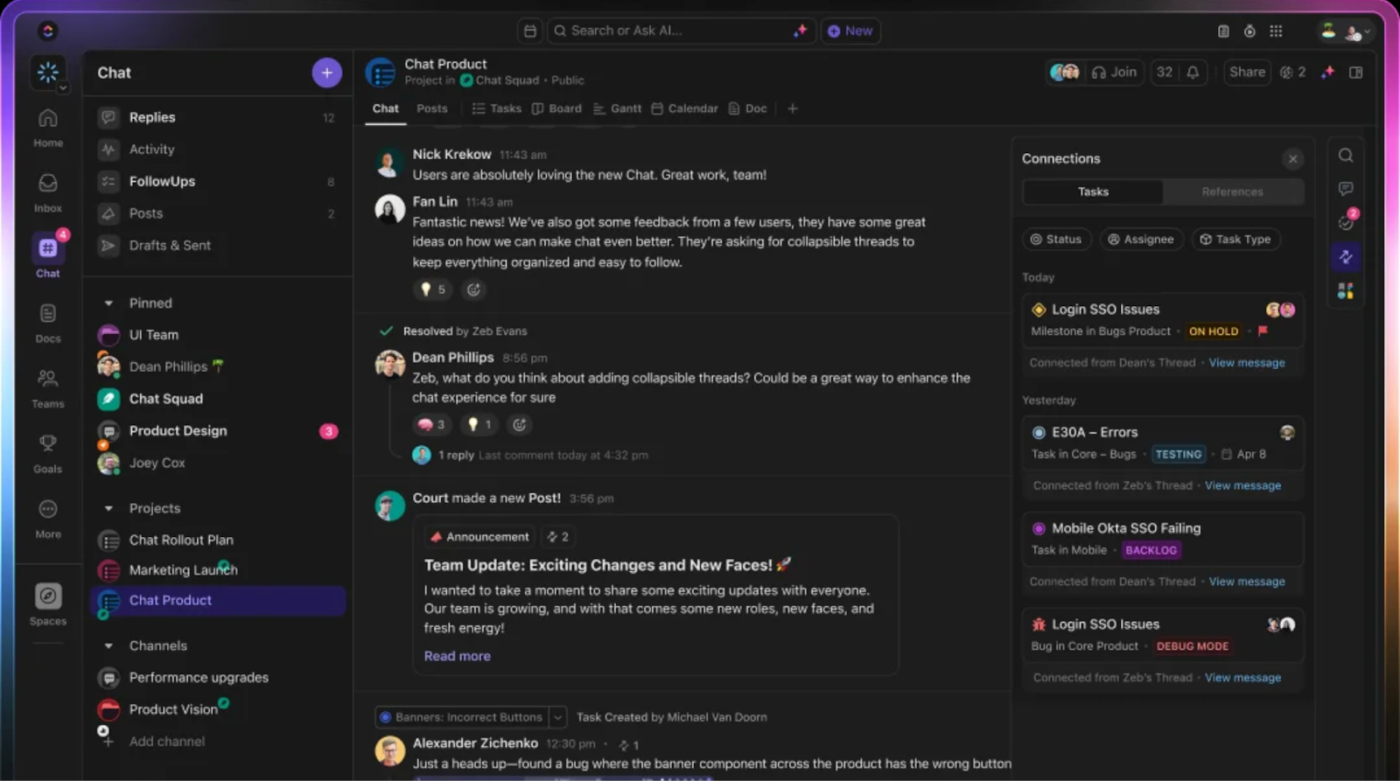
Need to close the loop with a customer? ClickUp’s Email Integration makes follow-ups simple, so customers know their voices are being heard.
Once you’ve gathered your feedback, don’t just skim it—analyze it. Look for patterns, frequency, and urgency. What are the recurring themes? Which pain points keep popping up?
When the volume feels overwhelming, ClickUp Brain steps in. It can:
This isn’t just convenient—it lets you make faster, smarter decisions backed by authentic voices.
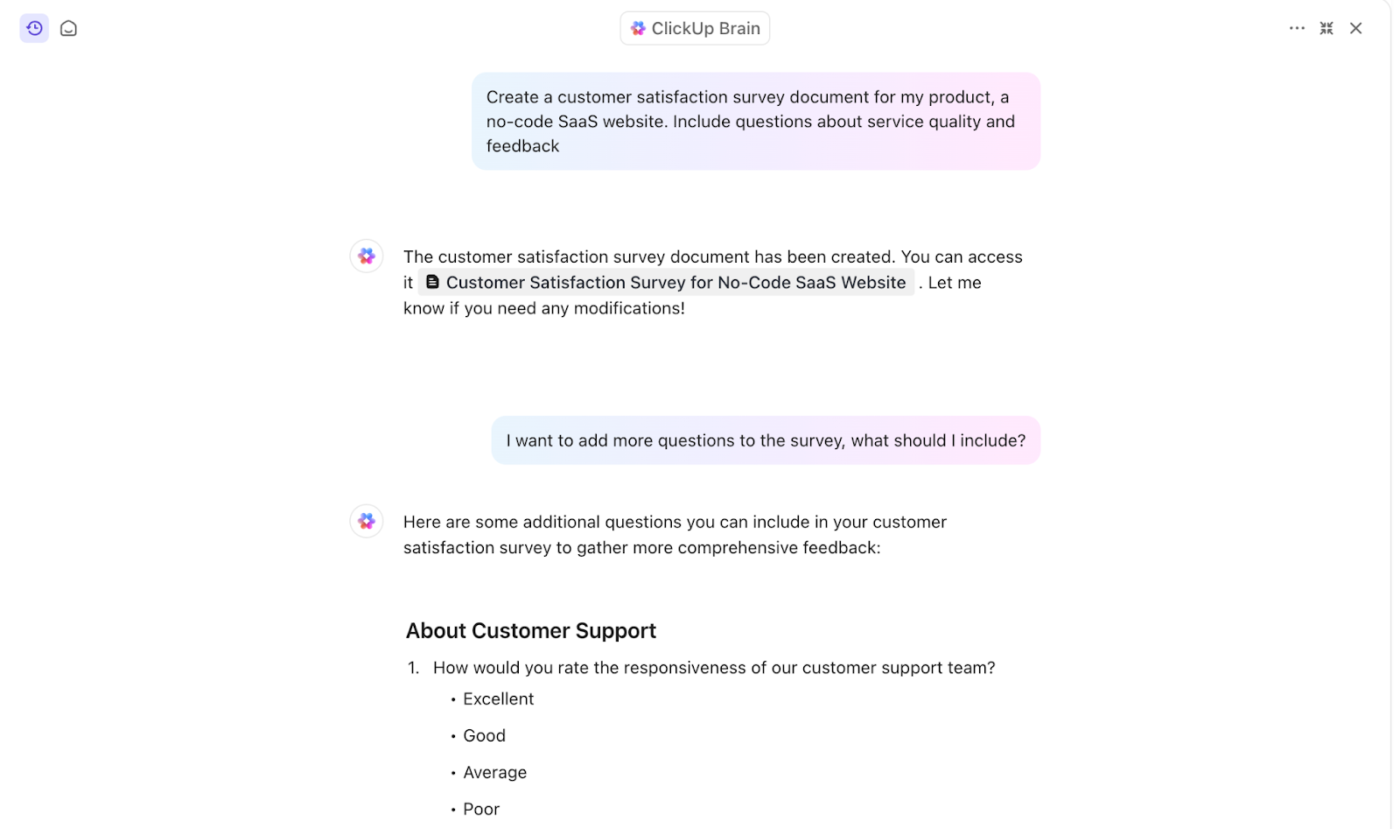
📮ClickUp Insight: 18% of our survey respondents want to use AI to organize their lives through calendars, tasks, and reminders. Another 15% want AI to handle routine tasks and administrative work. To do this, an AI needs to be able to: understand the priority levels for each task in a workflow, run the necessary steps to create tasks or adjust tasks, and set up automated workflows.
Most tools have one or two of these steps worked out. However, ClickUp has helped users consolidate up to 5+ apps using our platform! Experience AI-powered scheduling, where tasks and meetings can be easily allocated to open slots in your calendar based on priority levels. You can also set up custom automation rules via ClickUp Brain to handle routine tasks. Say goodbye to busy work!
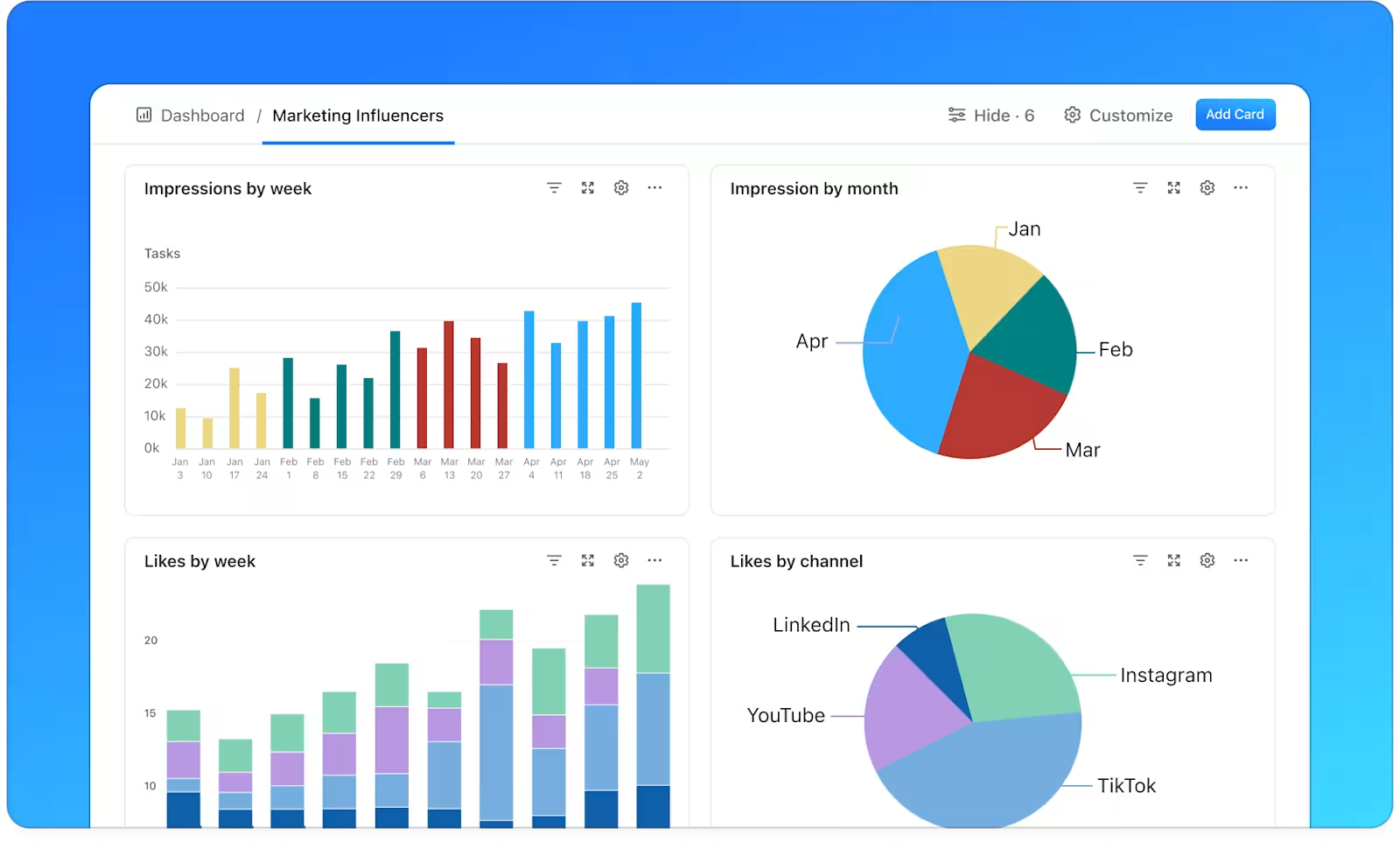
Feedback shouldn’t live in a vacuum. Use ClickUp Dashboards to create custom views for different teams. Marketing might care about messaging issues, while the product team wants to track bugs and feature requests. You can also track KPIs tied to feedback trends over time.
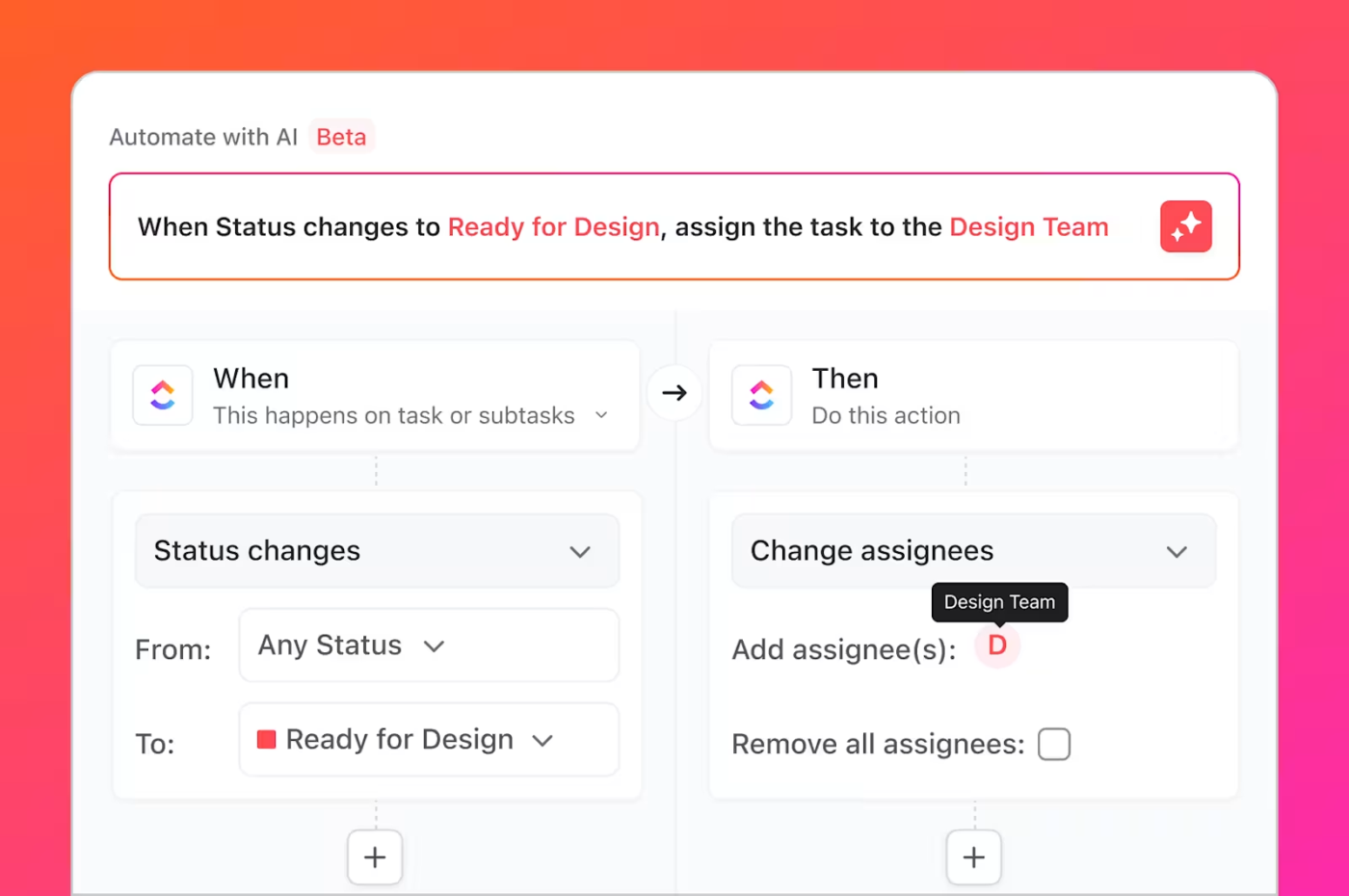
Not all feedback is created equal. Use a simple matrix: how many people are affected, how aligned is it with business goals, and how complex is the fix?
With ClickUp Automations, you can instantly assign feedback tasks to the right person—no more inbox clutter or forgotten requests.
Once you’ve acted on feedback, tell your customers. Let them know what’s changed and why—this builds trust and invites more of the good stuff next time around.
And don’t stop there. After a change goes live, track the results. Did that improve satisfaction? Has support ticket volume gone down?
Welcome to the loop: listen, improve, follow up, measure… and go again.
I think Clickup is brilliant. Why? It’s simple – I can plan the week of 4 people with just a few clicks and everyone including our customers have an overview. It’s efficient, logical and easy to understand. Furthermore, everyone can design their own views, dashboards, etc. – which makes it super individual.
Even the best feedback systems hit snags along the way. Here’s how to tackle the usual suspects—fast.
Challenge: Surveys can fall flat, with the email questionnaire response rate average being just 30%. That’s a lot of unheard voices!
💚 Try this: Swap out long quarterly surveys for always-on micro-feedback moments—think post-purchase, after a support chat, or right after a feature launch. Use fun, low-effort formats, such as sliders or quick polls.
If you’re only hearing from the super fans or the super frustrated, you’re missing the silent middle.
💚 Try this: Rotate who gets feedback requests and compare your sample to your overall customer base. Make sure feedback isn’t just coming from one vocal corner.
Are large volumes of unstructured feedback becoming overwhelming to analyze manually?
💚 Try this: Use tools like ClickUp for first-pass tagging and sentiment analysis, then dig into high-impact stuff with human eyes. A consistent tagging system helps everyone stay aligned.
Different departments advocate for their preferred feedback, and nothing moves ahead. This is a classic implementation of gridlock.
💚 Try this: Build a transparent scoring system that weighs customer impact, business goals, and the required lift. Everyone gets to play, but the rules are clear.
Feedback insights often get stuck in the planning stage without being implemented.
💚 Try this: Set aside time in each dev sprint for feedback-driven changes. Add a quick wins’ track to keep momentum going and give small insights a significant impact.
Your customer’s feedback is worth its weight in gold. But have you been letting them know what’s happening with it?
💚 Try this: Automate follow-ups using feedback form templates with built-in responses. Let people know if their idea’s being built, shelved, or not happening (nicely!).
Teams fix individual issues but often miss the underlying patterns that cause recurring customer service challenges.
Try this: Hold regular root-cause analysis sessions and track repeat issues. Some customer service challenges are chronic—treat the cause, not just the flare-ups.
The difference between average and exceptional feedback programs often comes down to these proven strategies:
Define what makes feedback actionable. Train teams to follow up on vague comments with clarifying questions. “I hate this” isn’t helpful; but “I can’t find the checkout button on mobile” is.
Use service level agreements (SLAs) for different feedback types, like:
People will keep sharing feedback if they know someone is reading it!
Discuss customer feedback in every team meeting—not just the support team. Celebrate wins where someone made a change based on real input.
Use a “You Said, We Did” approach. Share product updates inspired by feedback in emails, app updates, or social posts. It shows people they’re being heard.
Stop using sticky notes and random docs. Use product feedback software to manage it all—from intake to analysis to action. Bonus: many feedback form templates are built right in.
Building an effective customer feedback loop transforms transaction-based relationships into genuine partnerships. It turns passive users into active collaborators and casual buyers into loyal fans.
When you actively listen, learn, act, and close the loop, feedback stops being “just another data point” and becomes a core part of your business’s growth.
Plenty of brands claim to be customer-focused. The ones that show it, over and over again, with consistent action. Start where you are, build as you go, and keep that loop turning.
Let’s be honest—your customers already have opinions. The real question is: Are you capturing them, understanding them, and using them to move forward?
Ready to transform your customer feedback into business gold? Sign up for ClickUp for feedback management tools, templates, and automation to help you make it happen—without the chaos.
© 2025 ClickUp